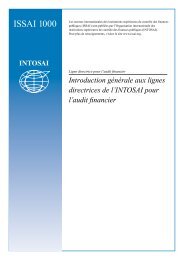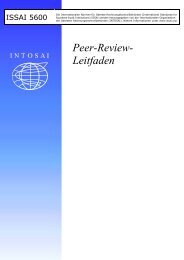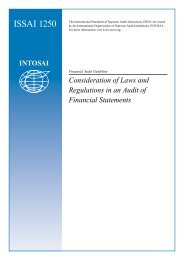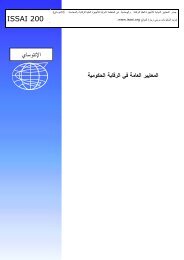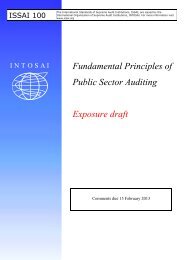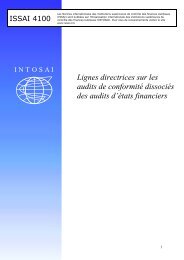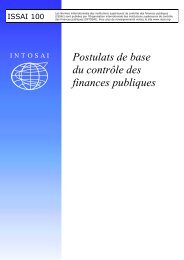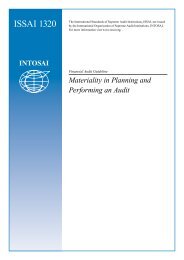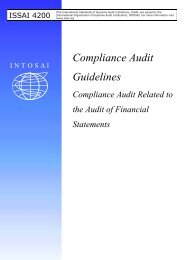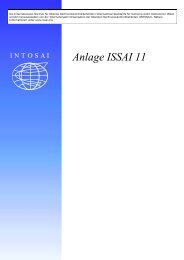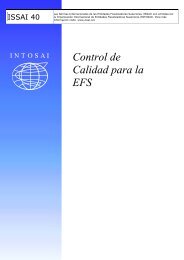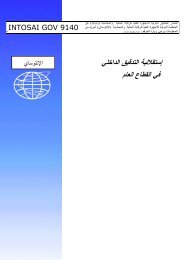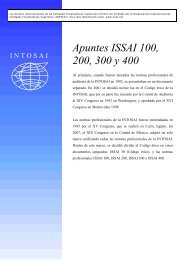ISSAI 1240
ISSAI 1240
ISSAI 1240
Create successful ePaper yourself
Turn your PDF publications into a flip-book with our unique Google optimized e-Paper software.
<strong>ISSAI</strong> <strong>1240</strong><br />
ISA 240<br />
THE AUDITOR’S RESPONSIBILITIES RELATING TO<br />
FRAUD IN AN AUDIT OF FINANCIAL STATEMENTS<br />
• Whether management has satisfactorily responded to any findings<br />
resulting from those procedures.<br />
Obtaining an Understanding of Oversight Exercised by Those Charged with<br />
Governance (Ref: Para. 20)<br />
A19. Those charged with governance of an entity oversee the entity’s systems for<br />
monitoring risk, financial control and compliance with the law. In many<br />
countries, corporate governance practices are well developed and those<br />
charged with governance play an active role in oversight of the entity’s<br />
assessment of the risks of fraud and of the relevant internal control. Since the<br />
responsibilities of those charged with governance and management may vary<br />
by entity and by country, it is important that the auditor understands their<br />
respective responsibilities to enable the auditor to obtain an understanding of<br />
the oversight exercised by the appropriate individuals. 16<br />
A20. An understanding of the oversight exercised by those charged with governance<br />
may provide insights regarding the susceptibility of the entity to management<br />
fraud, the adequacy of internal control over risks of fraud, and the competency<br />
and integrity of management. The auditor may obtain this understanding in a<br />
number of ways, such as by attending meetings where such discussions take<br />
place, reading the minutes from such meetings or making inquiries of those<br />
charged with governance.<br />
Considerations Specific to Smaller Entities<br />
A21. In some cases, all of those charged with governance are involved in managing<br />
the entity. This may be the case in a small entity where a single owner manages<br />
the entity and no one else has a governance role. In these cases, there is<br />
ordinarily no action on the part of the auditor because there is no oversight<br />
separate from management.<br />
Consideration of Other Information (Ref: Para. 23)<br />
A22. In addition to information obtained from applying analytical procedures, other<br />
information obtained about the entity and its environment may be helpful in<br />
identifying the risks of material misstatement due to fraud. The discussion<br />
among team members may provide information that is helpful in identifying<br />
such risks. In addition, information obtained from the auditor’s client<br />
acceptance and retention processes, and experience gained on other<br />
engagements performed for the entity, for example engagements to review<br />
interim financial information, may be relevant in the identification of the risks<br />
of material misstatement due to fraud.<br />
16<br />
ISA 260, paragraphs A1-A8, discuss with whom the auditor communicates when the entity’s governance<br />
structure is not well defined.<br />
20<br />
The Auditor’s Responsibilities Relating to Fraud in an Audit of Financial Statements 255



